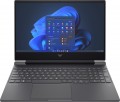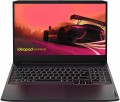Response time
Screen response time to a control signal — in other words, the time between the receipt of such a signal on the matrix and the switching of pixels to a given mode.
Theoretically, the lower the response time, the better the screen handles with dynamic scenes, the higher the frame rate on it can be achieved. At the same time, it is worth noting that almost all modern matrices have sufficient response speed to effectively process the classic frame rate of 60 Hz — and, recall, it is quite enough for most cases. So paying attention to this parameter makes sense, first of all, if you are purchasing an advanced gaming model, the screen of which operates at a frame rate of more than 60 Hz. In other cases, the response time is often not indicated at all.
Refresh rate
The frame rate supported by the laptop screen. In fact, in this case we are talking about the maximum frequency; the actual frame rate may be lower than this value, depending on the content being displayed — but not higher.
Theoretically, the higher the frame rate, the smoother the movement on the screen will look, the less moving objects will be blurred. In fact, the situation is such that even in relatively modest modern laptops,
60 Hz matrices are installed — in general, this is quite enough for the human eye, since a further increase in speed (
90 Hz and higher) does not significantly improve the visible “picture”. However, in high-end gaming and multimedia models designed for demanding users, higher values —
120 Hz,
144 Hz,
165 Hz and even
higher, namely
240 Hz and
300 Hz.
Contrast
The contrast of the screen installed in the laptop.
Contrast is the largest difference in brightness between the lightest white and darkest black that can be achieved on a single screen. It is written as a fraction, for example, 560:1; while the larger the first number, the higher the contrast, the more advanced the screen is and the better the image quality can be achieved on it. This is especially noticeable with large differences in brightness within a single frame: with low contrast, individual details located in the darkest or brightest parts of the picture may be lost, increasing the contrast allows you to eliminate this phenomenon to a certain extent. The flip side of these benefits is an increase in cost.
Separately, we emphasize that in this case only static contrast is indicated — the difference provided within one frame in normal operation, at constant brightness and without the use of special technologies. For advertising purposes, some manufacturers may also provide data on the so-called dynamic contrast — it can be measured in very impressive numbers (seven-digit or more). However, you should focus primarily on static contrast — this is the basic characteristic of any display.
As for specific values, even in the most advanced screens, this indicator does not exceed 2000: 1. But in general, modern laptops have a rather low contrast ratio — it is assumed that for tasks that require more advanced image characteristics, it is more...reasonable to use an external screen (monitor or TV).
AMD compatibility
The laptop supports
AMD FreeSync technology and its more advanced varieties (FreeSync Premium, FreeSync Premium Pro). Here are more details about them:
– AMD FreeSync. This function is found only in models equipped with discrete AMD graphics cards. It serves to match the frame rate of the screen and the frame rate of the incoming signal so that the frequencies match. This allows you to avoid flickering, jerking and other image defects that occur due to signal desynchronization. This function is especially useful for games where the frame rate of the video signal can “float” depending on the load on the graphics core; in fact, most laptops with FreeSync are specifically gaming laptops.
– AMD FreeSync Premium. An intermediate option between the core AMD FreeSync technology and the advanced FreeSync Premium Pro implementation. The Premium version does not have HDR support (unlike Pro), but it works at the same frame rate (at least 120 fps at a resolution of 1920x1080) and uses LFC low frame rate compensation technology.
– FreeSync Premium Pro. The most advanced version of FreeSync technology, formerly known as AMD FreeSync 2 HDR. As the original name suggests, one of the highlights of this edition is HDR support. FreeSync Premium Pro claims a frame rate of at least 120 fps at Full HD resolution, as well as a low frame rate compensation (LFC) function. According to the creators, FreeSync Premium Pro works espec
...ially well in games; and many modern games are initially created to work with this technology.
NVIDIA video cards use a similar technology called G-Sync.Passmark CPU Mark
The result shown by the laptop processor in the Passmark CPU Mark test.
Passmark CPU Mark is a comprehensive test that is more detailed and reliable than the popular 3DMark06 (see above). It checks not only the gaming capabilities of the CPU, but also its performance in other modes, based on which it displays the overall score; this score can be used to fairly reliably evaluate the processor as a whole (the more points, the higher the performance).
SuperPI 1M
The result shown by the laptop processor in the SuperPI 1M test.
The essence of this test is to calculate the number "pi" to the millionth decimal place. The time spent on this calculation is the final result. Accordingly, the more powerful the processor, the smaller the result will be (this SuperPI 1M is fundamentally different from many other tests).
Max. RAM
The maximum amount of RAM that can be installed on a laptop. It depends, in particular, on the type of memory modules used, as well as on the number of slots for them. Paying attention to this parameter makes sense, first of all, if the laptop is bought with the expectation of
and the amount of actually installed memory in it is noticeably less than the maximum available. So laptops can be upgraded in RAM to 16 GB,
24 GB a>,
32 GB, 48 GB,
64 GB and even more -
128 GB.
GPU TDP
The amount of heat generated by the graphics processing unit (GPU) during normal operation. TDP is expressed in watts. It allows you to evaluate the thermal characteristics of a laptop and determine its potential for working with high graphics loads. The higher the GPU TDP value, the more power the GPU consumes, which may require a more efficient cooling system to avoid overheating and ensure stable operation of the device. Laptops with higher GPU heat dissipation are better suited for gamers or graphics and video production professionals.
Additional 2.5" slot
The presence in the laptop of an additional compartment for an internal drive of the form factor 2.5 ".
Usually, to install or remove a drive in such a bay, it was not necessary to disassemble the entire laptop — just remove the cover or remove the plug. As for 2.5", this is the traditional form factor for hard drives (HDD) for "laptop" purposes, although other types of media (SSD and SSHD — see "Media Type") can be produced in this format. For connection 2.5 "storage drives normally use the SATA connector — it is not as fast as more modern standards like M.2 PCI-E (see "Drive Interface"), however, it is cheaper, and for HDD this connector is quite enough.
Thus, the
presence of an additional 2.5" bay allows you to quickly and cost-effectively increase the total volume of laptop drives.

